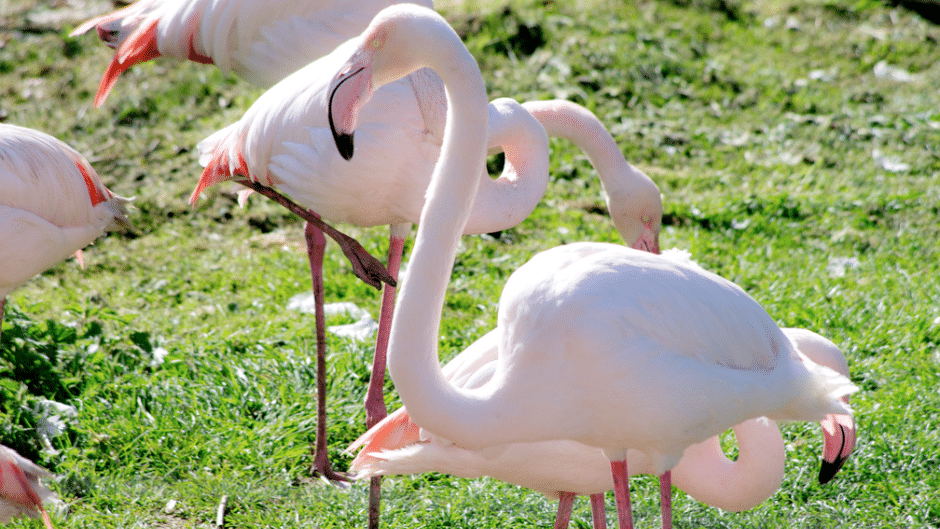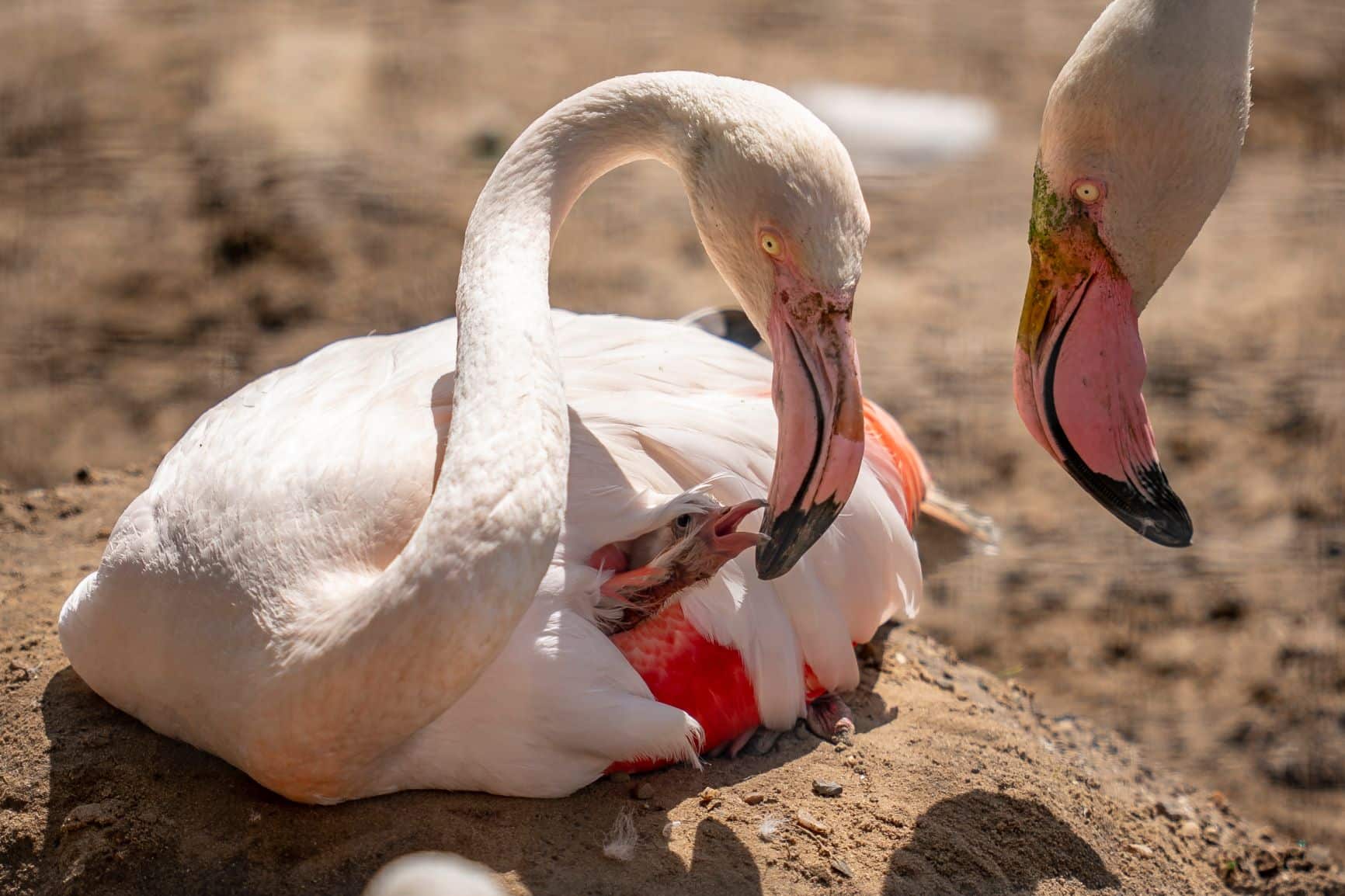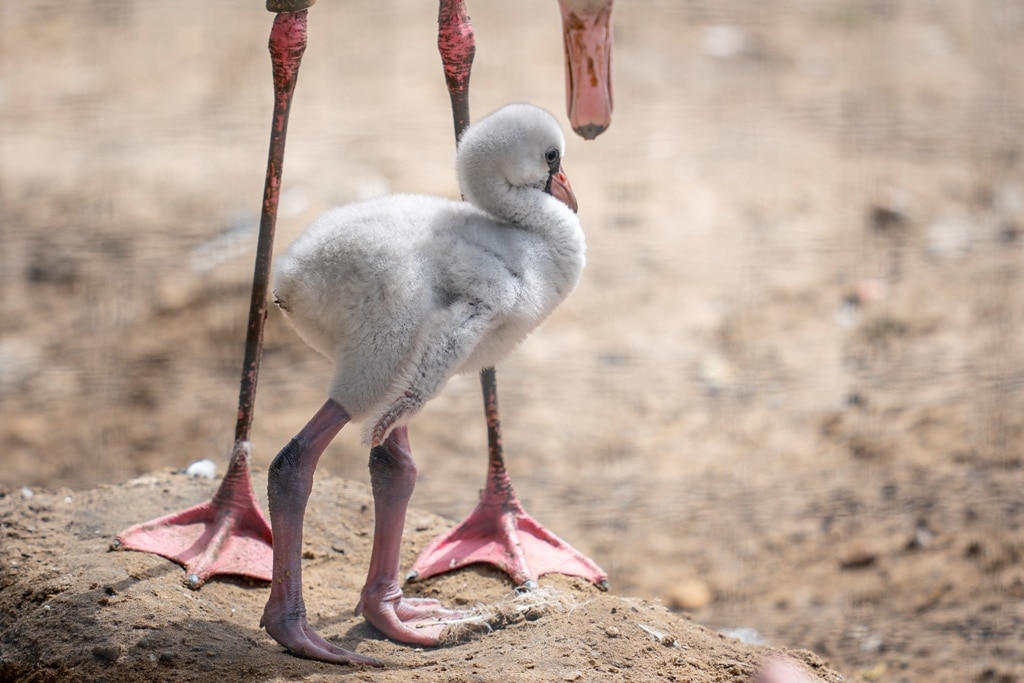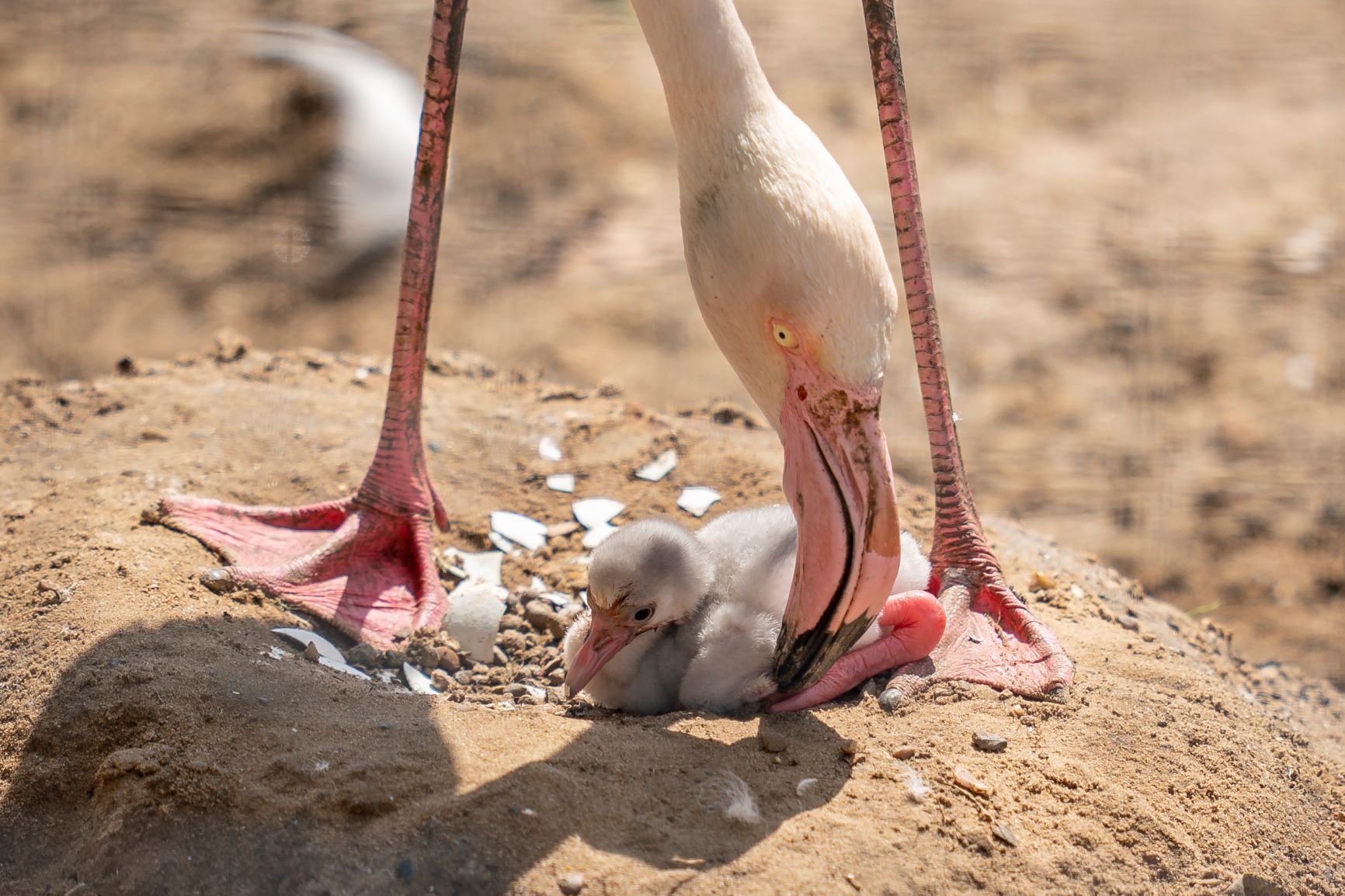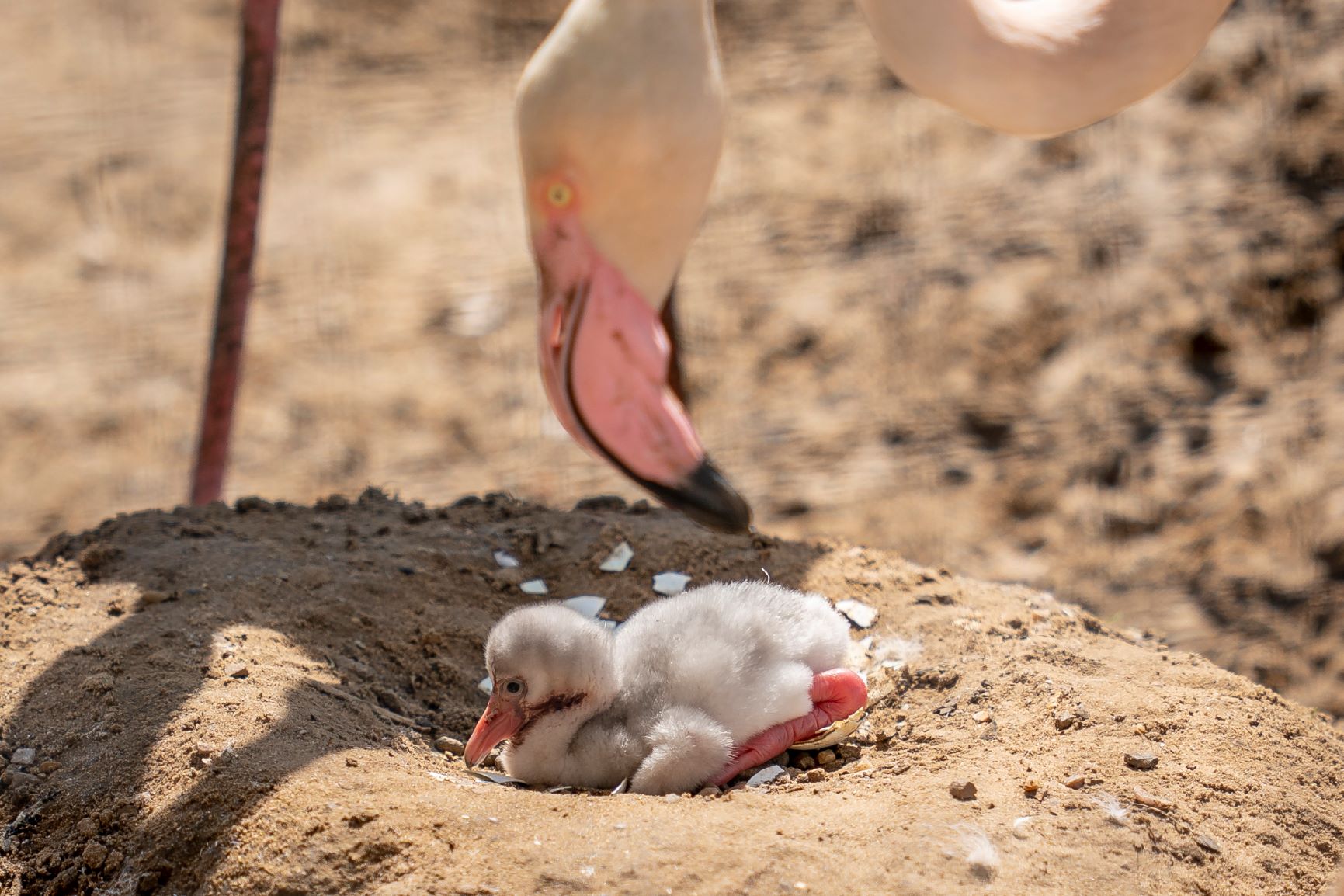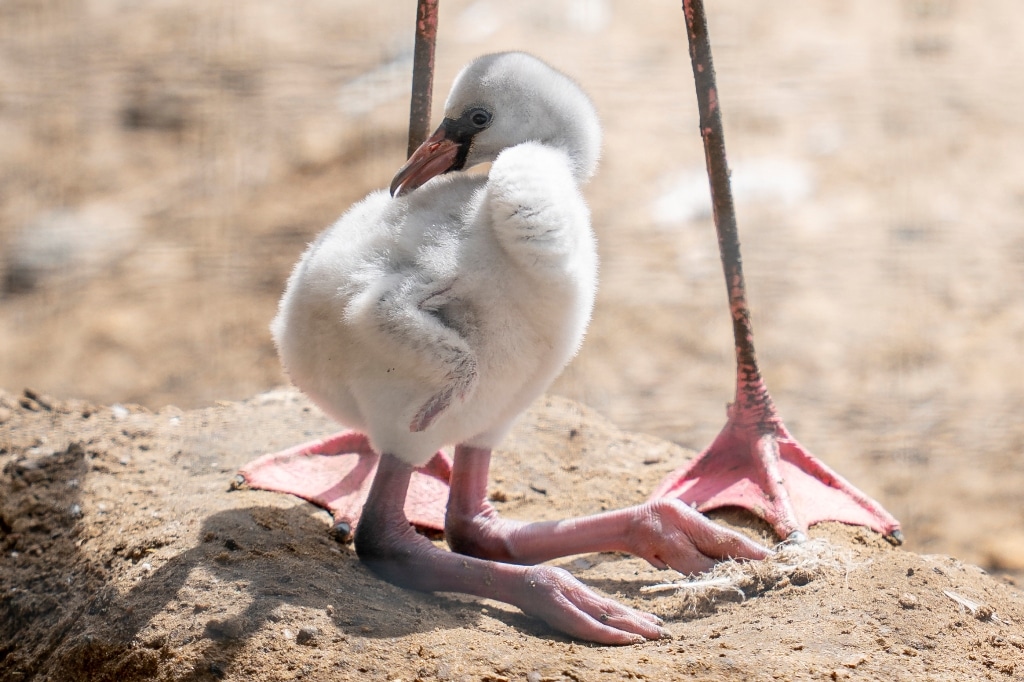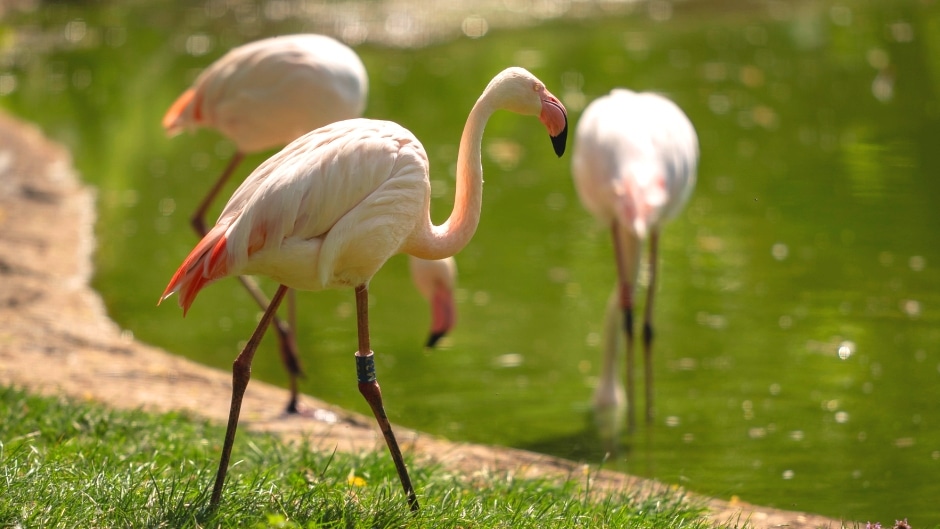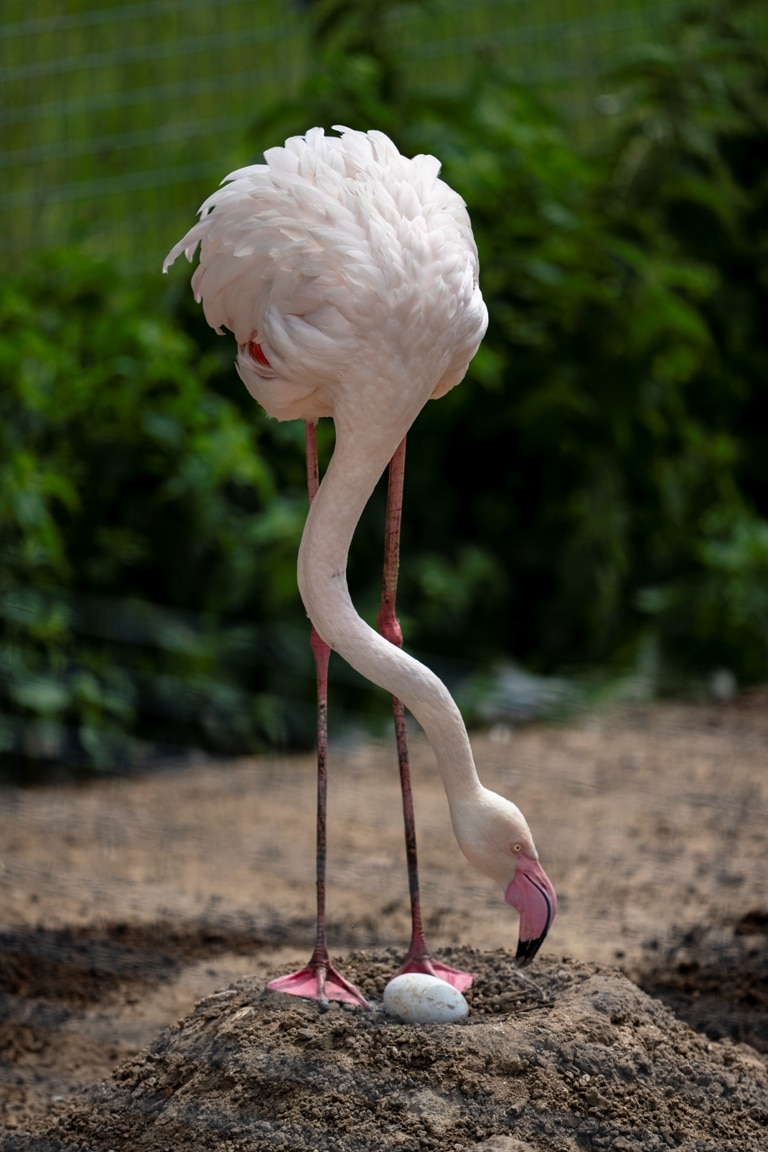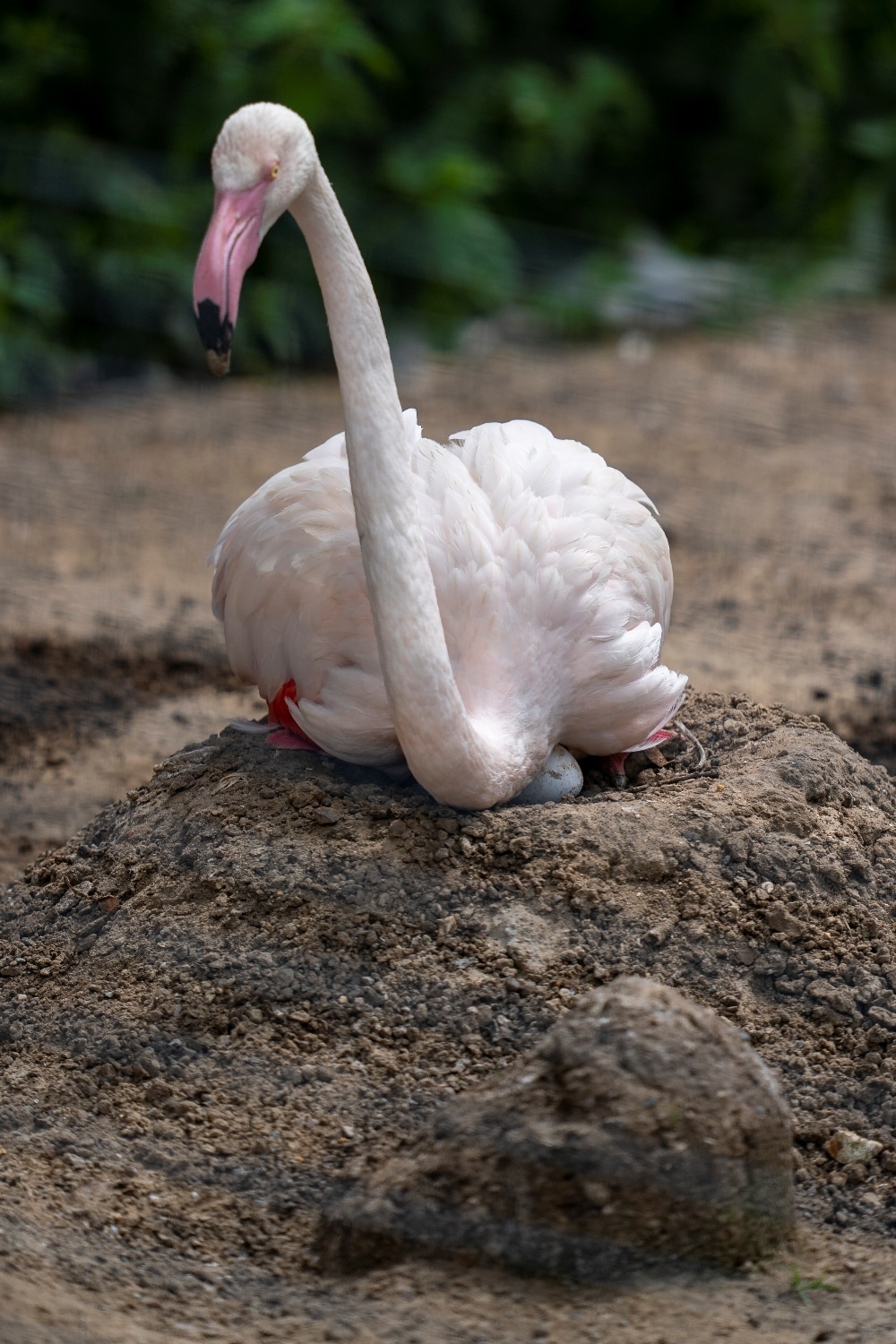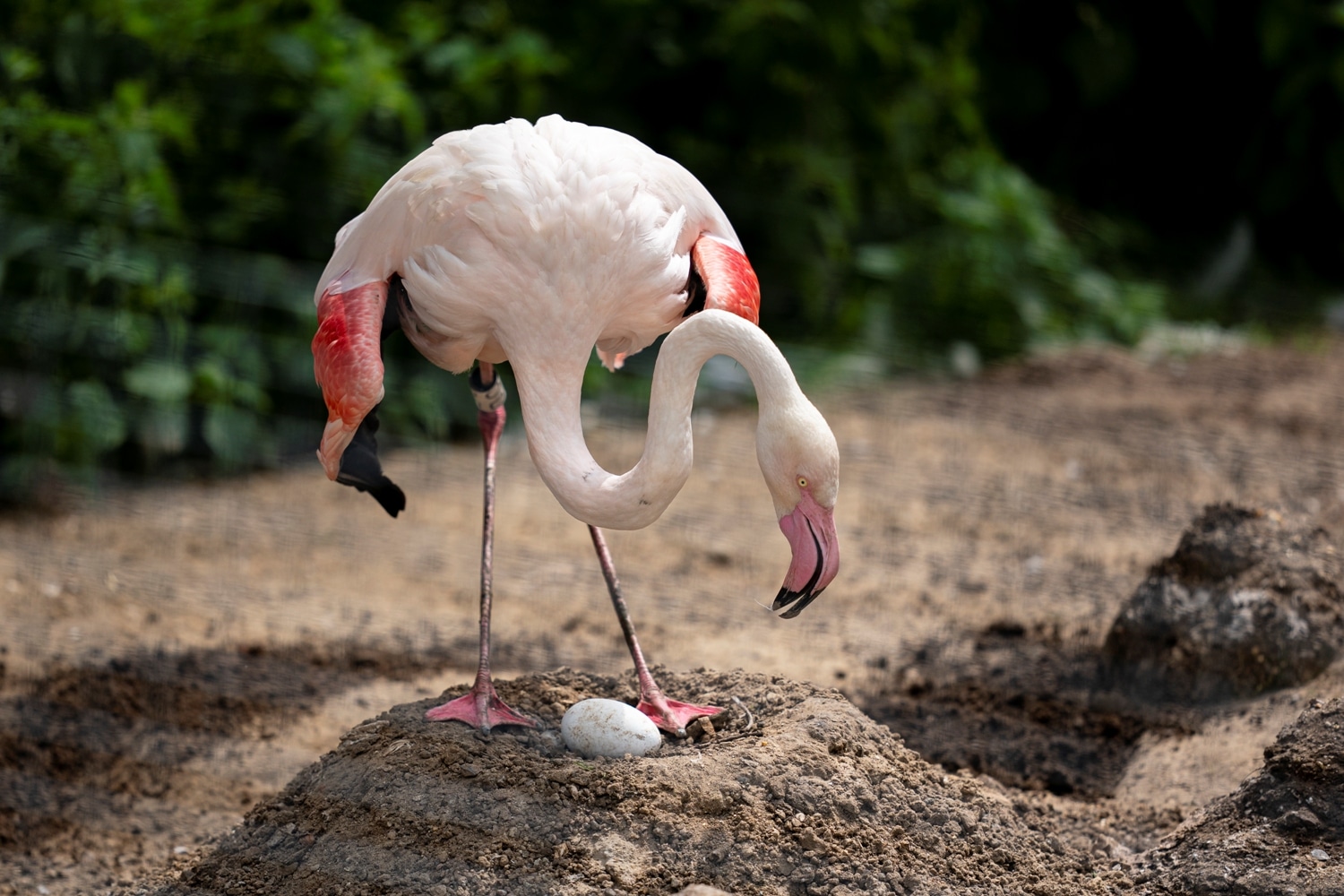Greater flamingo
Common Name: Greater flamingo
Scientific Name: Phoenicopterus roseus
Greater flamingos are a sociable species and are often seen in flocks of more than 100. Thousands may flock together in areas with plenty of food.
Flamingos get their pink colouring from carotenoid pigments found in some of the foods they eat, such as algae and invertebrates.
Fast Facts
-
Status
Least Concern
-
Size
Height: 120–145 cm; wingspan: 140–165 cm
-
Weight
2100–4100 g
-
Gestation
27-31 days
-
Young
Usually 1 egg is laid
-
Life span
Up to 44 years
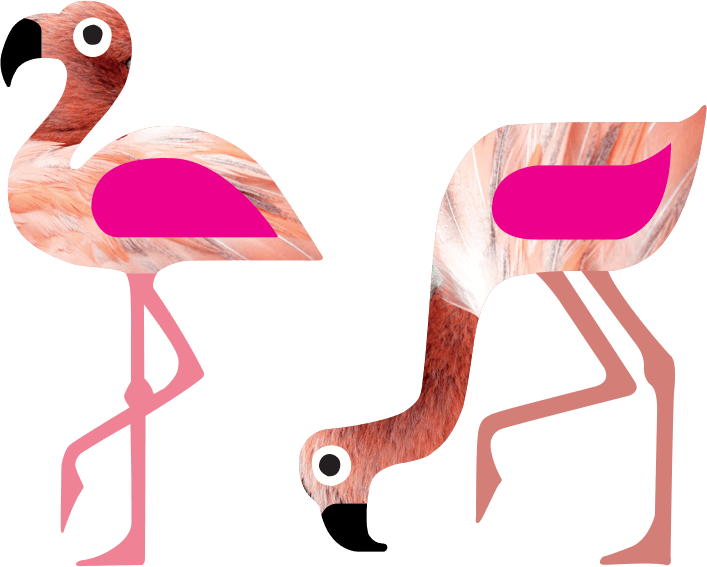
In the wild
Greater flamingos eat a variety of aquatic invertebrates such as crustaceans, molluscs and insects, as well as plant material such as the seeds and shoots of marsh grasses, algae and decaying leaves. They occasionally eat crabs, small fish and insects such as waterbeetles. Greater flamingos usually feed with their head and most of their neck completely underwater. They get their food by swiftly pumping water in and out of their bills and filtering the food particles out of the water using thin plates called lamellae.
These flamingos occur over a large area, including West Africa, North Africa, the Mediterranean, the Middle East and southern and south-western Asia. They are found in shallow bodies of water such as saline lagoons, saltpans and saline or alkaline lakes, and also estuaries and coastal waters. They nest and roost on sandbanks, mudflats, islands or boggy, open shores.
Greater flamingos usually build cone shaped nests out of mud, but if they are nesting on rocky islands, their nests may just be a small pile of stones. Flamingos usually lay one egg, but occasionally two. When chicks first hatch they have pale grey down, which is soon replaced by a second, darker coat of down. They fledge at between 65 and 90 days old. Flamingos feed their chicks with ‘flamingo milk’ which is produced in their crop. This milk is similar to mammal milk, but is produced by both male and female flamingos. They may only feed their chicks once every few days where their feeding area is distant from their breeding area.
Birds such as raptors, crows and gulls are known to predate on flamingo eggs and chicks. In the Camargue, yellow-legged gulls are thought to be responsible for half of the eggs and chicks taken in some years. These gulls have worked out that if they peck the flamingo’s leg joints or pull them up by their bill, the birds are forced to get up off their nests and the gulls can steal the eggs or chicks. In East Africa, Marabou storks are known to prey on eggs and chicks.
Greater flamingos are not globally threatened, and are seen regularly across their range. However, this species does face threats from habitat loss and disturbance, as well as being persecuted by people, for example being caught and sold in markets in Egypt. Measures have been put in place to protect breeding colonies and establish new ones.
